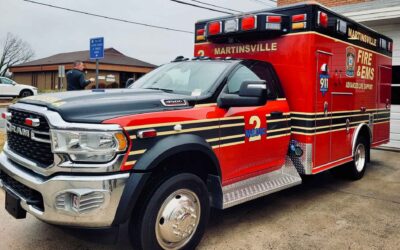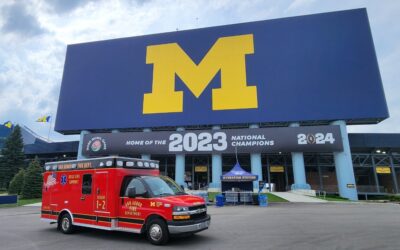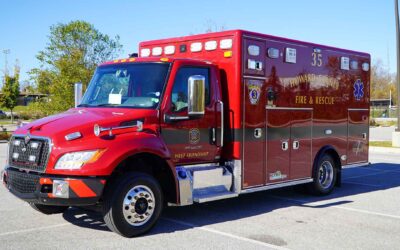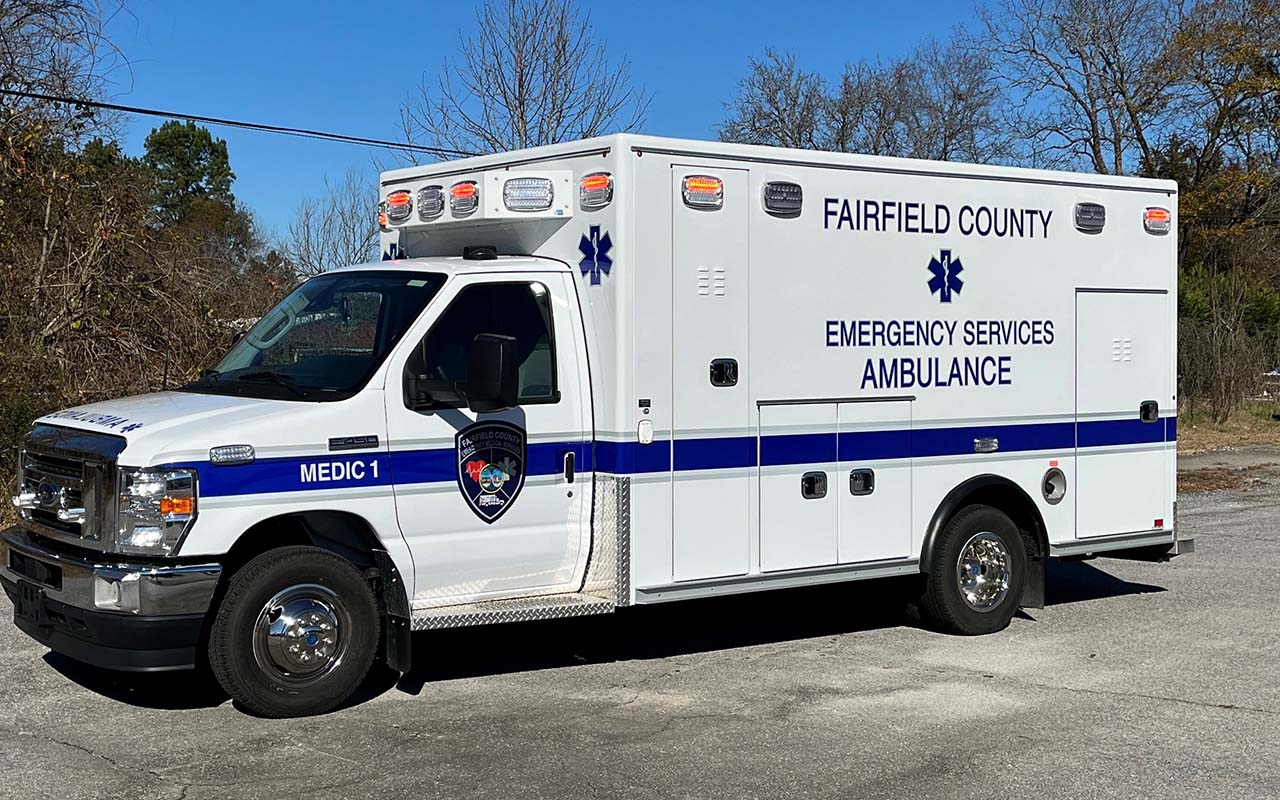
Fairfield County (SC) Emergency Medical Services has put this Road Rescue Type 3 Ultramedic ambulance in service in its fleet. (Photos courtesy of Atlantic Emergency Solutions unless noted otherwise.)
By Alan M. Petrillo
Fairfield County (SC) Emergency Medical Services typically runs nine advanced life support (ALS) ambulances in its fleet, and after it found it needed to retire two vehicles, it purchased two used rigs. Then another older ambulance needed to be retired, but Fairfield County couldn’t find a used ambulance to buy and couldn’t wait the long lead time to get a new one built. But the agency found a way out of its dilemma by buying a demo Type 3 Ultramedic ambulance built by Road Rescue for Atlantic Emergency Solutions.
Fairfield County EMS Director Timothy Martin says his agency covers 710 square miles from six stations staffed by 19 full-time paramedics and 12 EMTs, plus administrative staff. “It’s an extremely rural district with a population of 20,948, which generated 4,899 calls in 2022,” Martin observes. “It’s so difficult to get ambulances these days, so we are grateful that Atlantic Emergency Solutions had a demo available for purchase. This Road Rescue Ultramedic is the first Type 3 ambulance in our fleet, with the others being six Road Rescue Type 1s, a Taylor Made Type 1, and an International medium-duty Type 1.”
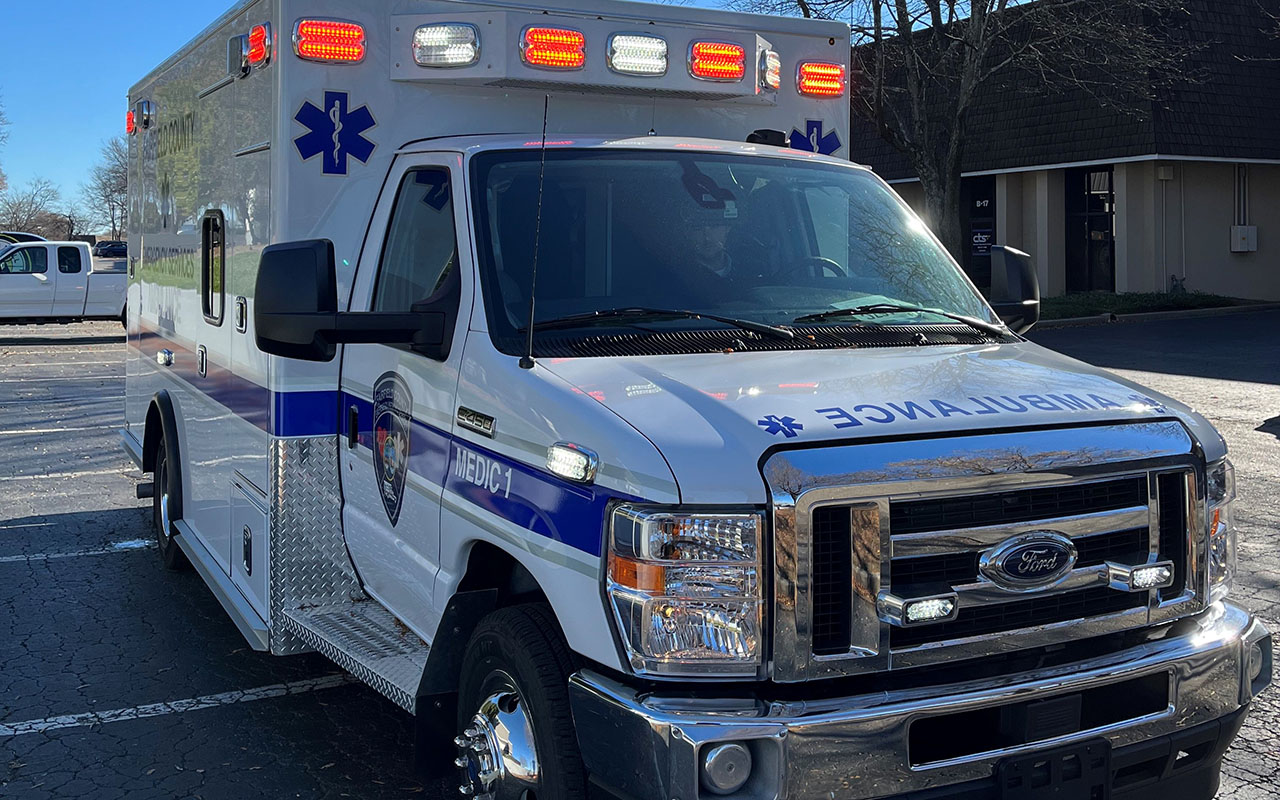
The new Road Rescue for Fairfield County is built on a Ford E-450 chassis with a 10-inch cab extension and a walk-through to the patient module.
Cory Outen, South Carolina regional account manager for Atlantic Emergency Solutions, says that Fairfield County EMS has been a customer of his dealership for several years. “When they told us they needed an ambulance really quick, we showed them the demo truck we had just received from Road Rescue,” Outen points out. “Fairfield County found that the Type 3 was compatible with their needs, and the only things we had to do to it for them was install a Stryker PowerLOAD system and PowerCOT, and put on a full 3M graphics wrap, then deliver it to them within a month-and-a-half of their purchase.”
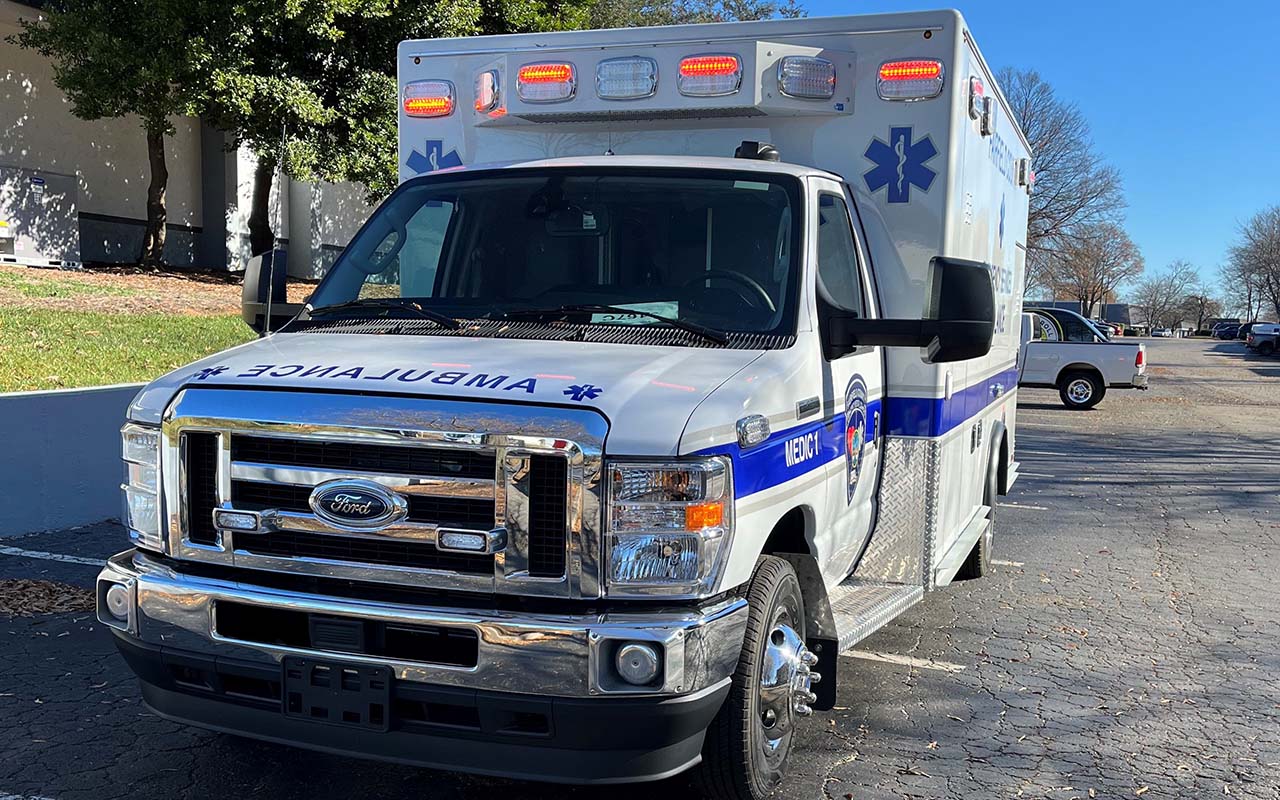
Fairfield County’s new Type 3 has a CoolBar auxiliary condenser, and Whelen LED emergency and scene lighting.
Holly Russell, brand manager for Road Rescue, says the Type 3, which is certified to both federal KKK-A-1822F Star of Life, and Commission on Accreditation of Ambulance Services (CAAS) standard, is built on a Ford E-450 chassis with a 10-inch cab extension that has a walk-through to the patient module, a 158-inch wheelbase, an overall length of 22-feet 8-inches, and an overall height of 7-feet 4-inches.
Russell says the Type 3 Ultramedic has four seating positions in the patient box, a CPR seat to the left of the cot, an attendant’s seat at the head of the cot, and two seats on the squad bench on the curb side wall. All seating positions are protected by Per4Max four-point harnesses, she adds.
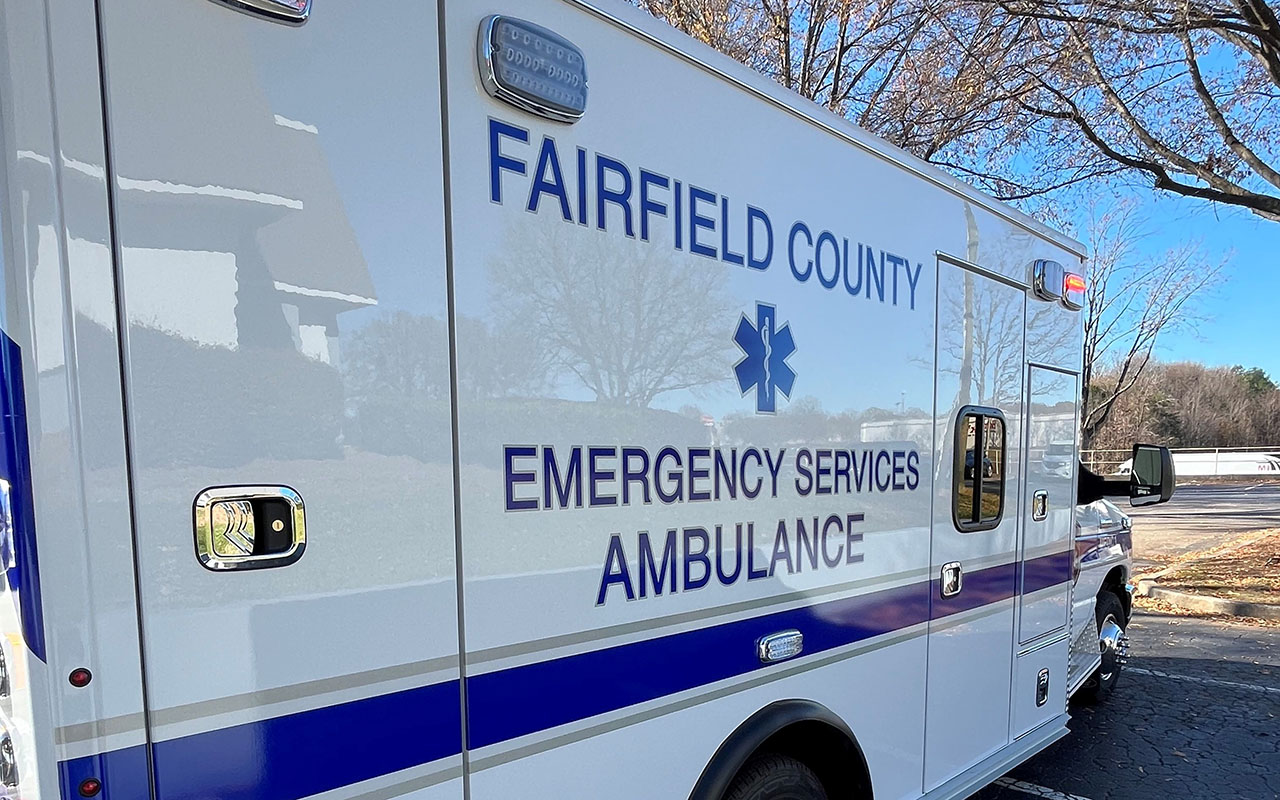
The curb side rear compartment on the rig has access from both inside and outside the vehicle, and holds a backboard, stair chair and other equipment.
The interior of the module has turn signal and brake light indicators on the rear wall so medics can be alerted to turns and stops, solid surface antimicrobial countertops, restocking cabinets on both sides, a suction unit relocated to patient head level, door handles at the top inside of the doors for a more ergonomic way of exiting, and LED lighting in the ceiling and down the medical device rail.
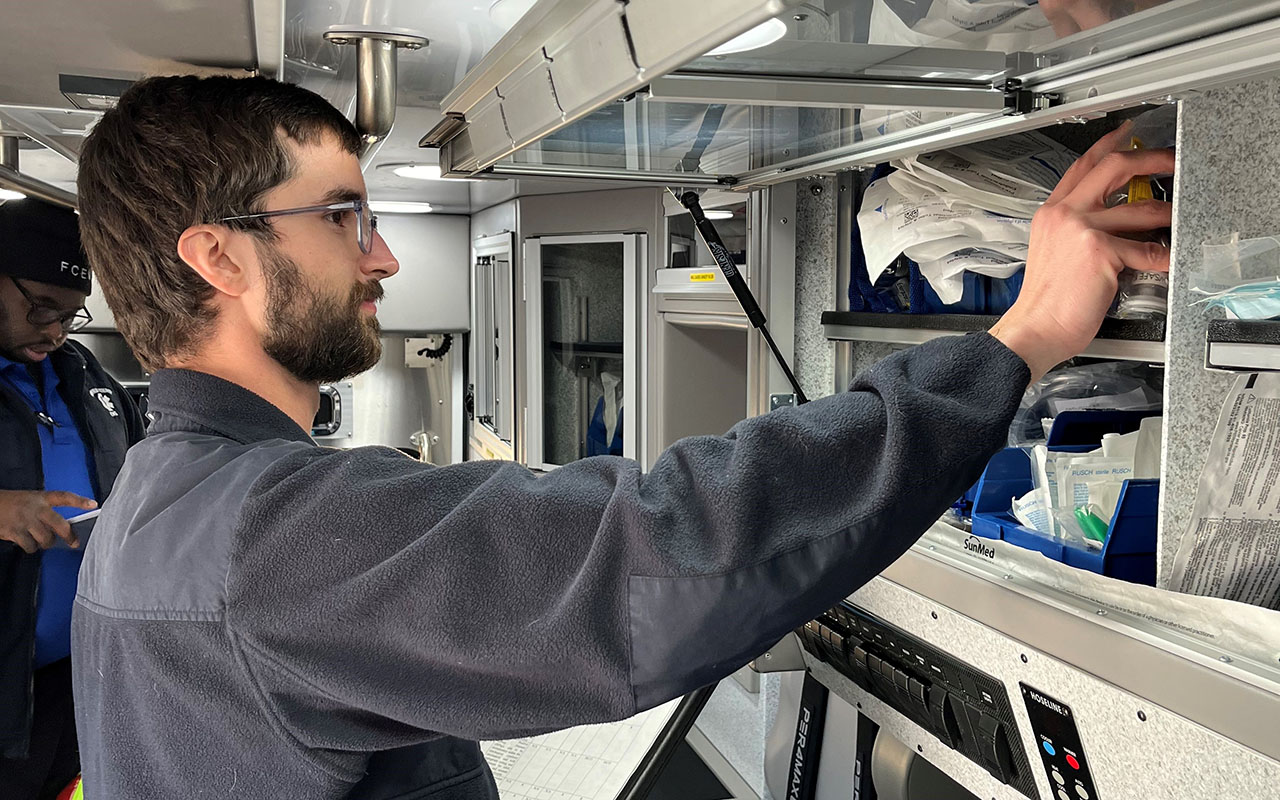
One of Fairfield County’s paramedics restocks the supplies in a cabinet. (Photo courtesy of Fairfield County Emergency Medical Services.)
The exterior of the rig has a CoolBar auxiliary condenser on the front of the patient box, a Zico electric oxygen tank lift in the first compartment on the street side, an interior/exterior access compartment on the curb side rear that holds a backboard, stair chair and other equipment, a 5-inch drop skirt to make entry into the module easier, a Voyager backup camera, and all Whelen LED emergency and scene lighting.
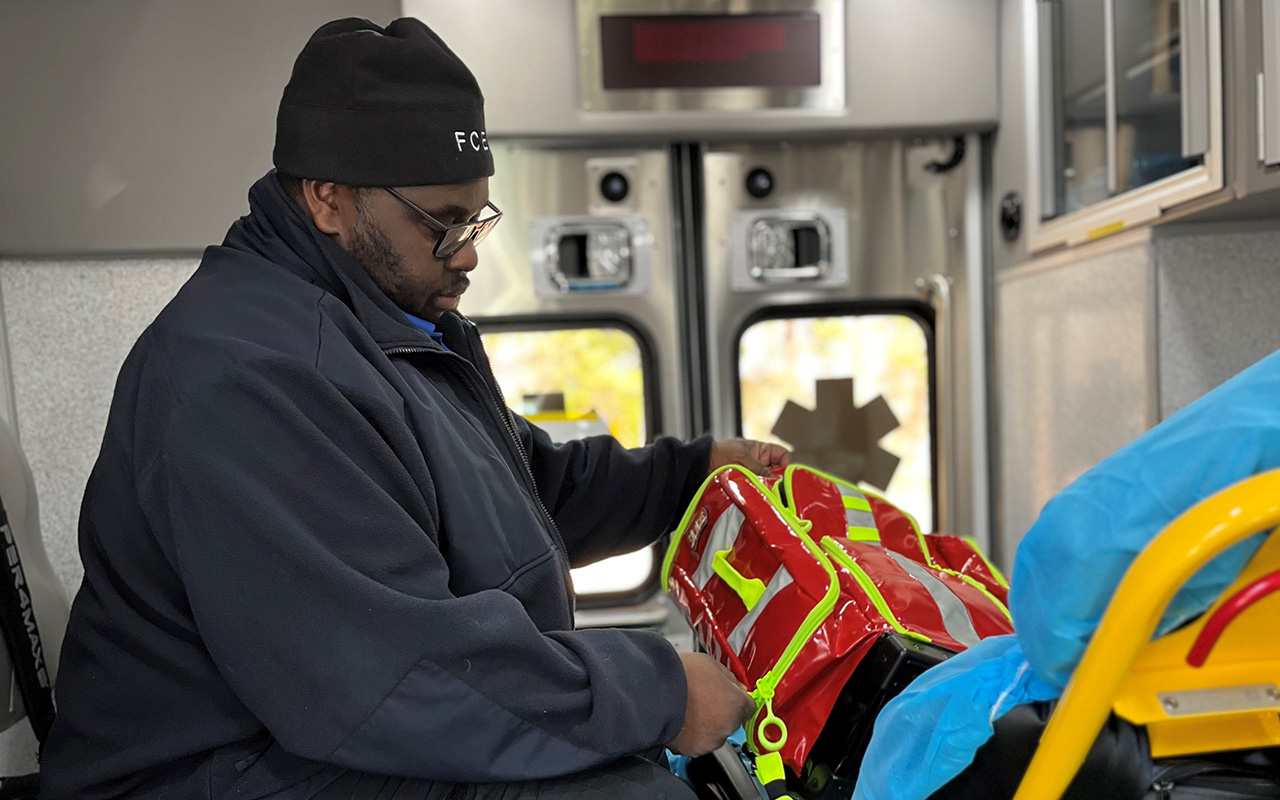
A paramedic sets up an EMS bag on the rig’s Stryker PowerCOT. (Photo courtesy of Fairfield County Emergency Medical Services.)
Martin points out that because his ambulances cover such a large rural area, each Fairfield County rig is equipped with a HURST Jaws of Life® battery-powered spreader. “We never know where we will be dispatched in the county, so we want to be prepared when we find ourselves in rescue situations where extrication is necessary,” he says.
ALAN M. PETRILLO is a Tucson, Arizona-based journalist, the author of three novels and five nonfiction books, and a member of the Fire Apparatus & Emergency Equipment Editorial Advisory Board. He served 22 years with the Verdoy (NY) Fire Department, including in the position of chief.

